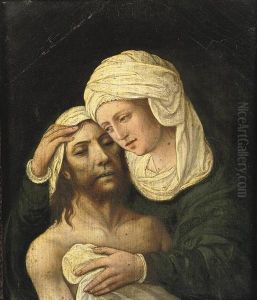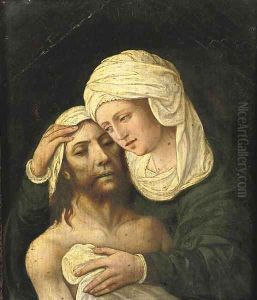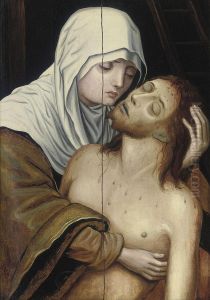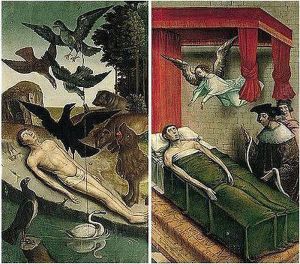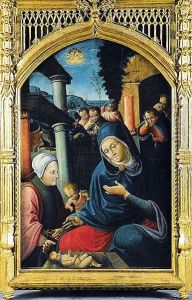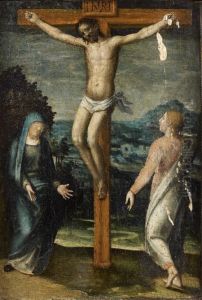Juan De Flandres Paintings
Juan de Flandes, whose name suggests his Flemish origins, was a highly skilled Early Netherlandish painter active during the late 15th and early 16th centuries. While his exact birthplace is not known, art historians infer from his name that he was born in the region that is now Belgium or the Netherlands, around 1460. He is best known for his detailed portraiture and religious compositions, which reflect the intricate style and technical precision characteristic of Flemish art of the period.
Juan de Flandes' career is most notably linked to Spain, where he became a court painter to Queen Isabella I of Castile. Around 1496, he was appointed to this prestigious position, which he held until the queen's death in 1504. During his tenure, he produced numerous works for the royal family, including personal devotional paintings and portraits. His style during this period blended the realism and attention to detail typical of Flemish art with the grandeur expected in royal commissions.
After Queen Isabella's death, Juan de Flandes continued to work in Spain, where he found a receptive audience for his work, especially among the religious institutions. One of his most significant projects was a series of panels depicting scenes from the life of Christ for the altarpiece of the Cathedral of Palencia. These works, completed between 1505 and 1508, showcase his ability to convey narrative and emotion through meticulous composition and vibrant color.
Juan de Flandes' influence extended beyond his own works, as he played a role in introducing the Northern Renaissance style to Spain. His paintings are noted for their integration of detailed landscapes and domestic interiors with religious themes, a fusion that would resonate with Spanish artists in the following decades. Sadly, many of his works have been lost or are only known through later copies, but those that survive are held in high esteem and can be found in museums across Europe and the United States.
The exact circumstances of Juan de Flandes' death are unclear, but it is believed he died in 1519. His legacy lives on through his surviving works, which continue to be studied and admired for their technical skill and unique blend of Flemish and Spanish artistic traditions, marking him as a key figure in the spread of Renaissance ideas throughout Europe.
